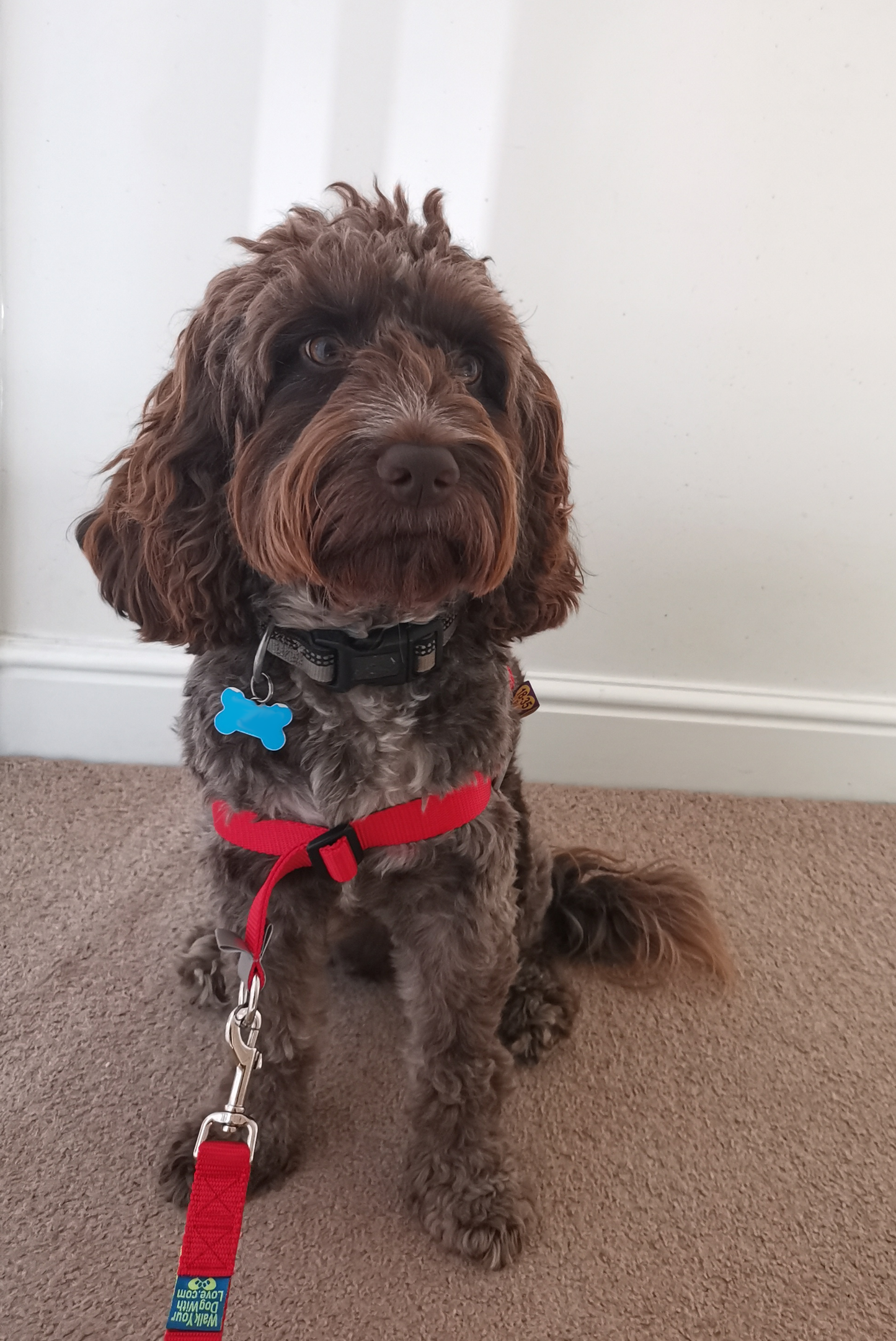When you walk at a good pace, your dog will most likely trot along to keep up and will have fewer chances to "stop and smell the flowers," but when things slow down, pulling can become a frustrating problem. Remember that every second your dog is on the leash, you are either training or untraining him. Change your walking pace, use positive reinforcement to keep your dog's attention, and be the leader of your walks.
- Consider the full range of harnesses, leads, and collars available to you. We have found that Walk your dog with love - no pull dog harnesses are an excellent training tool.
- Set the pace to make yourself the focus of your dog's attention. Even if you only have a few minutes to spare, try to begin your walk quickly and with purpose. Use a shorter leash length for the "speed" portions of your walk until he reliably keeps up. If your dog is about to surge ahead on the shorter leash, try a gentle squeeze on the leash or physically step ahead of him to block his rush. If he responds to the gentle squeeze by looking at you or slowing his pace, immediately praise him! Try more randomised, circuitous routes during the fast portion of your walk as your dog responds better to your cues. You want the dog to be attentive to you, not just following a pre-planned route every day!
- Check in with your dog on a regular basis during the slower "loose leash" portions of your walk by saying her name, making a specific noise, or a gentle pull on the leash. Praise or reward him if she makes eye contact with you in response to your signal. Begin by attempting to get his attention when he is not distracted and gradually progress to asking for his attention in increasingly distracting environments.
- If your dog charges ahead, try turning in a circle right away. If you're worried about your dog getting jerked at the end of the leash when you turn, try saying something like "with me!" or "come on!" to get his attention, or call his name or gently pull the leash to get eye contact. Most dogs quickly learn that if pulling doesn't get them where they want to go, they might as well play your game. Reward or praise any eye contact or effort he makes to follow you.
- Using consistent leash lengths for close walking and loose leash walking helps your dog understand the range of motion you expect him to move in. For consistency, tie a couple of knots in your leash. Retractable leashes should be avoided until your dog has a reliable recall and will not injure himself running against the end of it.
Walk your dog with love and train every day to help with no-pull dog walks.










